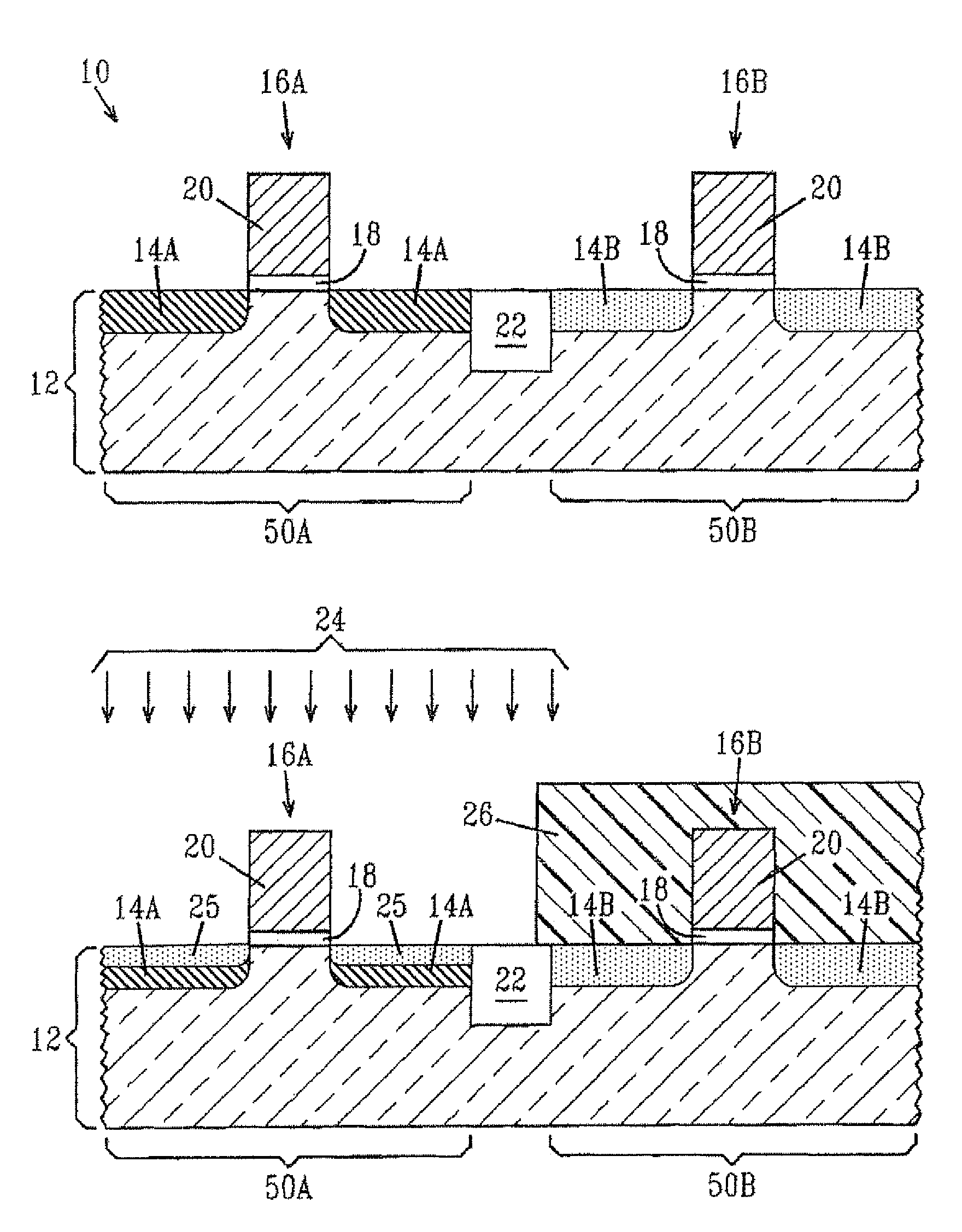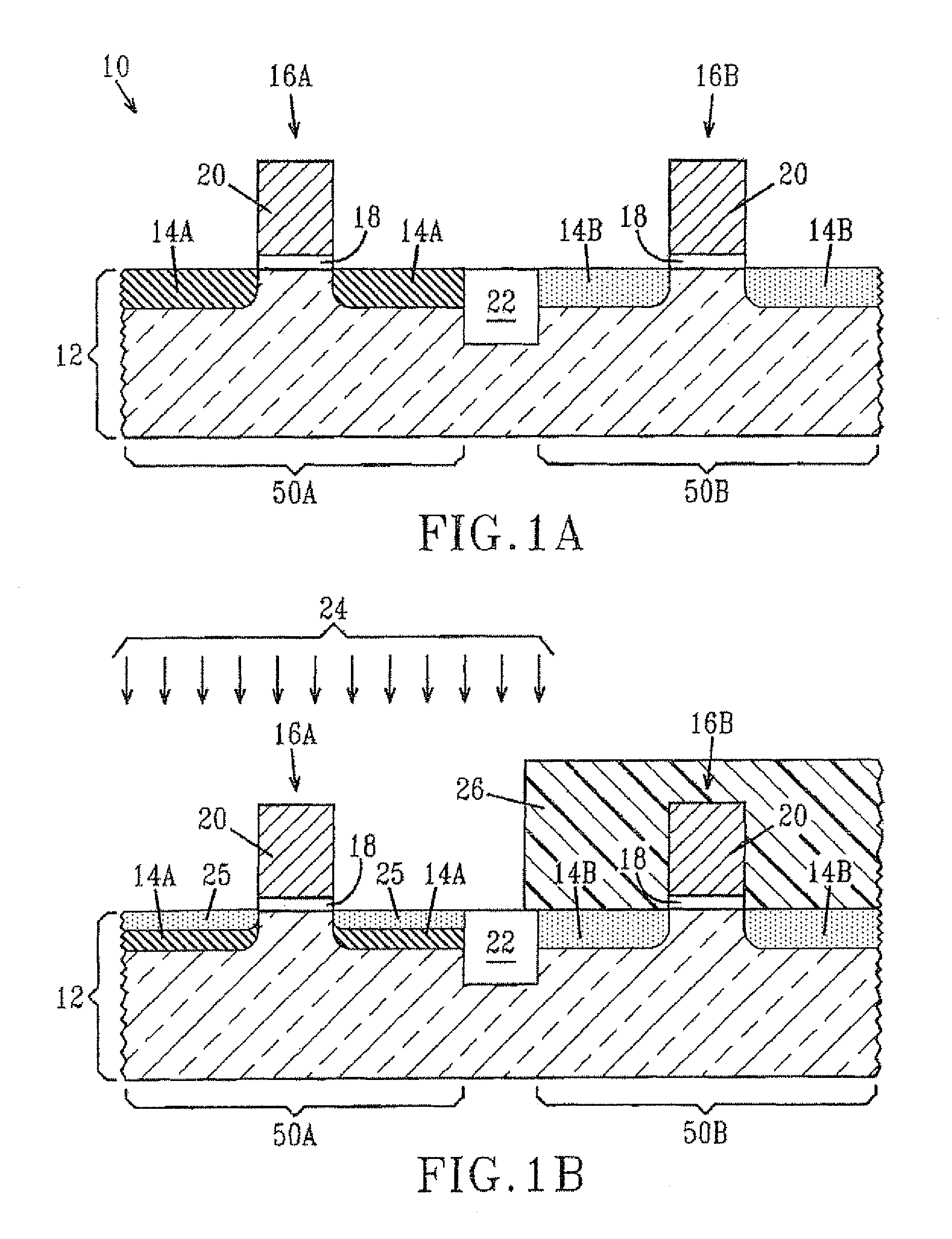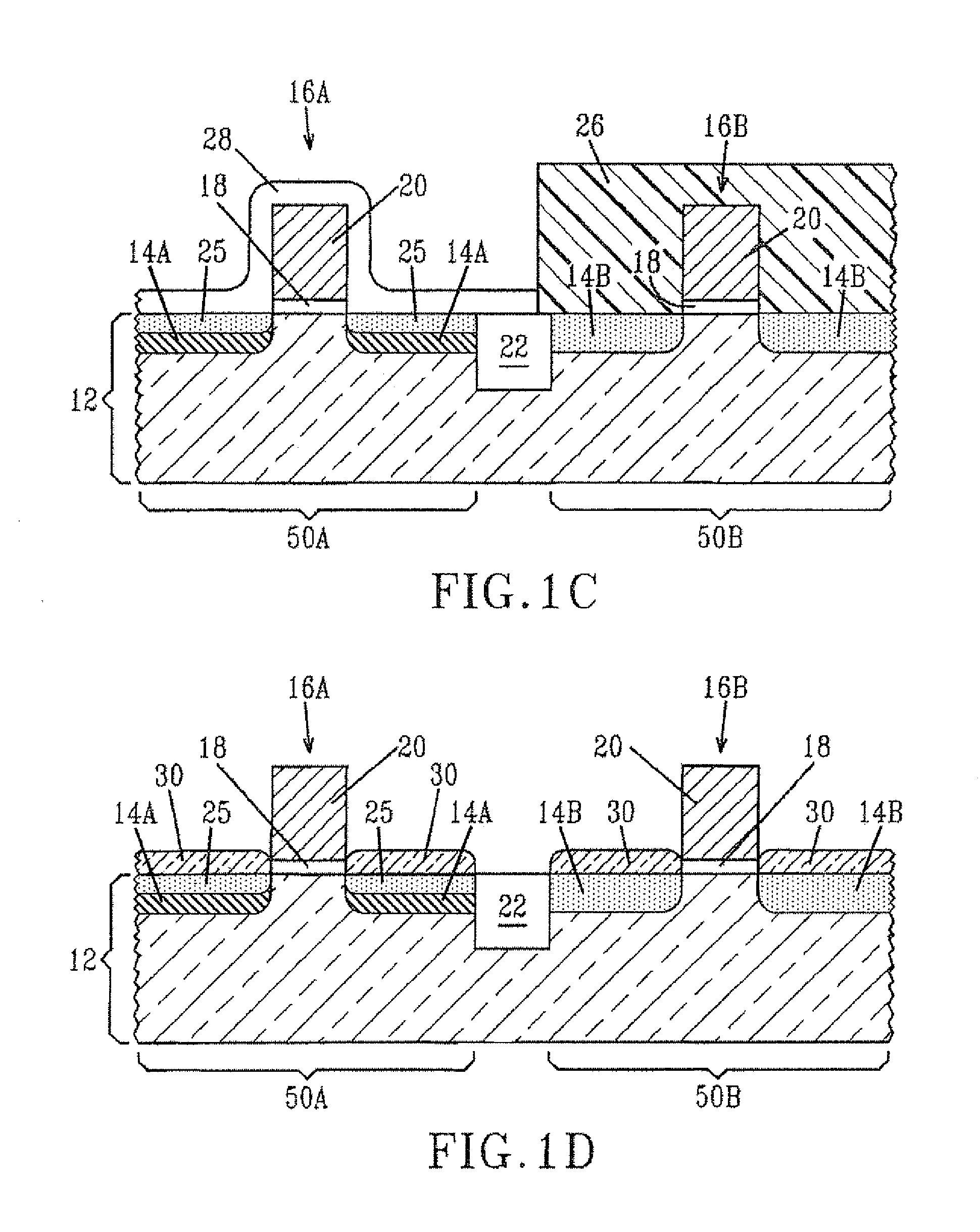Method for tuning epitaxial growth by interfacial doping and structure including same
a technology of interfacial doping and growth rate, applied in the direction of semiconductor devices, basic electric elements, electrical appliances, etc., can solve the problems of insufficient simultaneous growth, excessive thinning of the underlying crystalline or polycrystalline surface from which the epitaxial film is grown, etc., to achieve the same growth rate prevent the growth of an epitaxial material in that surface region
- Summary
- Abstract
- Description
- Claims
- Application Information
AI Technical Summary
Benefits of technology
Problems solved by technology
Method used
Image
Examples
Embodiment Construction
[0021]The present invention, which provides a method of interfacial control for selective or non-selective epitaxial growth for semiconductor structures as well as the structures that result from such a method, will now be described in greater detail by referring to the drawings that accompany the present application. It is noted that the drawings of the present invention are provided for illustrative purposes and as such they are not drawn to scale. It is also noted that the following description and drawings describe the inventive method being implemented in fabricating a CMOS structure including RSD. Although such an embodiment is described and illustrated, the inventive method can be used for fabrication of other semiconductor devices, which include the epitaxial growth of a material layer from at least one material region that is doped or undoped.
[0022]FIG. 1A shows an initial structure 10 that can be used in the present invention. As shown, the initial structure 10 includes a ...
PUM
| Property | Measurement | Unit |
|---|---|---|
| dielectric constant | aaaaa | aaaaa |
| dielectric constant | aaaaa | aaaaa |
| dielectric constant | aaaaa | aaaaa |
Abstract
Description
Claims
Application Information
 Login to View More
Login to View More - R&D
- Intellectual Property
- Life Sciences
- Materials
- Tech Scout
- Unparalleled Data Quality
- Higher Quality Content
- 60% Fewer Hallucinations
Browse by: Latest US Patents, China's latest patents, Technical Efficacy Thesaurus, Application Domain, Technology Topic, Popular Technical Reports.
© 2025 PatSnap. All rights reserved.Legal|Privacy policy|Modern Slavery Act Transparency Statement|Sitemap|About US| Contact US: help@patsnap.com



